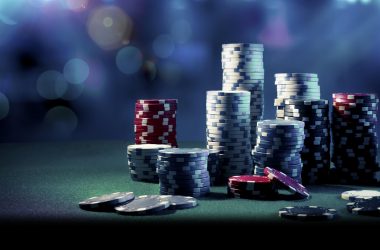Slot machines have been a mainstay in gambling for decades, captivating players with their flashing lights, mesmerizing sounds, and the promise of hitting the jackpot. As millions of people around the globe spin the reels in the hope of landing a big win, it’s essential to delve deeper into the psychology behind slot game design. What makes these games so addictive, and how do they keep players returning for more? In this article, we’ll uncover the secrets that lie beneath the surface of slot games for big wins.
The Element of Surprise
One of the most powerful tools in slot game design is the element of surprise. These games are designed to create anticipation and excitement with every spin. The unpredictability of the outcome, combined with the possibility of hitting a massive jackpot, keeps players on the edge of their seats. It’s this thrill of not knowing what will happen next that makes slot games so compelling.

The Role of Visual and Auditory Stimuli
Slot games for big wins are not just about gameplay; they are also a sensory experience. Game designers incorporate vibrant visuals, engaging animations, and immersive sound effects to captivate players. The colorful symbols, dazzling graphics, and catchy tunes all contribute to the game’s overall enjoyment. These sensory stimuli activate the brain’s pleasure centers, making players feel rewarded even when they don’t win.
The Illusion of Control
Many slot games feature bonus rounds or interactive elements that give players the illusion of control. This sense of agency can be highly motivating, as players believe their choices can influence the outcome. However, slot machines operate on random number generators (RNGs), ensuring that each spin is entirely independent of previous ones. The perception of control keeps players engaged and invested in the game.
Near Misses and Persistence
Slot games are notorious for near misses, where the symbols on the reels come tantalizingly close to forming a winning combination. These near misses trigger the brain’s reward system and encourage players to keep spinning in the hopes of landing a win. The frustration of almost winning can be as motivating as actual victories, leading players to persist in their pursuit of the elusive jackpot.

The Gambler’s Fallacy
The gambler’s fallacy is a cognitive bias that leads players to believe that past outcomes influence future results. Slot game designers often exploit this bias by displaying recent wins or losses, leading players to think that a big win is just around the corner. This fallacy can be a powerful motivator, as players are more likely to keep playing in the belief that their luck is about to change.
Responsible Gaming and Awareness
While the psychology behind slot game design is fascinating, it’s crucial to recognize the potential risks associated with excessive gambling. Players should be aware of the allure of slot games and exercise responsible gaming practices. Setting limits, taking breaks, and seeking support if needed are essential steps in ensuring that the enjoyment of these games doesn’t spiral into a harmful addiction.
In conclusion, slot games for big wins are a testament to the intricate psychology of human behavior. Game designers employ various techniques to create a captivating and addictive experience, from surprise elements to sensory stimuli and the illusion of control. Understanding the psychology behind these games can help players make informed choices and enjoy them responsibly.





